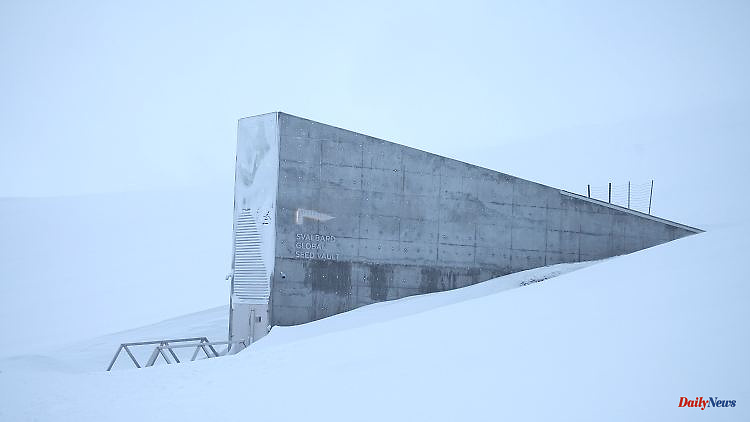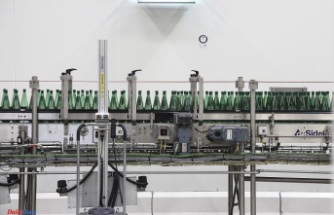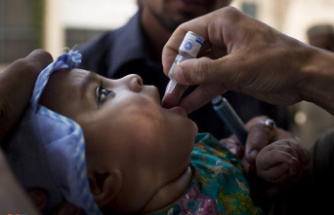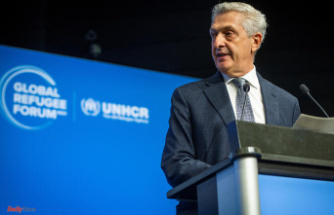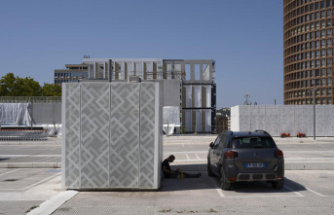Climate change is also threatening the biodiversity of crops. In order to secure as many different seeds as possible, a special treasury was created in the far north of Europe. Seeds from all over the world have been kept there for 15 years - for emergencies that have already occurred.
The icy cold wind rushes around a heavy steel door embedded in a spectacular concrete entrance leading to the interior of a snow-capped mountain. In this frosty environment lies a treasure that should ultimately help to ensure the food supply for mankind: Seeds such as wheat and barley, various types of fruit and vegetables and many other useful and cultivated plants are stored here on Spitsbergen in all seclusion - far away from War, destruction and natural disasters and preserved for the future in sub-zero temperatures.
The Svalbard Global Seed Vault, located on the northern Norwegian archipelago of Spitsbergen near the polar town of Longyearbyen, has become a kind of arctic Noah's Ark for plant diversity since it opened in 2008. Seeds of more than 6,000 plant species are stashed there, deep-frozen, so that you can fall back on them if the worst comes to the worst. This Sunday, this unique facility on Spitsbergen, which is usually called Svalbard in Norwegian and also in English, is now 15 years old.
"For us, Svalbard is a life insurance policy that we may never use," says Stefan Schmitz, executive director of the Bonn-based World Trust for Crop Diversity, or Crop Trust for short. "It's life insurance for feeding the world in the 21st century."
Crop Trust is one of the three operators of the seed vault, along with the Norwegian government and the Nordic agricultural research institute NordGen. The ultimate goal: to secure the plant diversity of the world and thus not least the food supply of mankind for the future. "We collect seeds there and secure them in order to be prepared for all possible emergencies," says Schmitz.
Ideally, such emergencies never occur - but once they did: The international research institute Icarda was no longer able to access its gene bank in Aleppo during the course of the Syrian civil war - but fortunately the institute had already had copies of the seeds from its collection stored in Svalbard in 2012 .
"At that time we were able to send 116,000 seed samples to Icarda in Lebanon and Morocco, with which new units were set up in these countries," says Åsmund Asdal, who, as the plant's operations coordinator, is something like the guardian of Spitsbergen's seed treasure. "Of course it's a sad story about Syria, but it's an excellent example of the importance of the seed vault." In the meantime, the Icarda has already been able to send back more than 100,000 samples to the seed vault.
Virtually all seed banks in the world can back up their stocks. They can reclaim these duplicates whenever they deem necessary. They are stored at minus 18 degrees in vacuum-packed aluminum bags, which are stowed away in boxes in three cooling chambers that are shielded from the outside world. One could also speak of an "iron, icy reserve," says Schmitz.
A total of 1,195,244 seed samples from 93 gene banks are currently secured in the vault, as Asdal recently explained in a webinar. These include over 200,000 wheat, 170,000 rice and 90,000 barley samples, but only one or two of some food crops. The Seed Vault has capacity for 4.5 million seed samples, so there is still plenty of room.
One might think that one or two types of wheat should be enough to make a reasonable pizza dough, for example. And in fact, for a good 100 years there has been an optimization in agriculture towards fewer and fewer species and varieties, as Schmitz says. Among other things, this makes products cheaper and easier to store - but at the same time the variety of plants on the fields is lost. According to estimates by the UN Food and Agriculture Organization (FAO), 75 percent of this was lost between 1900 and 2000.
A central task of gene banks and the vault on Svalbard is therefore to preserve this diversity. "The aim of the gene banks and the seed depot on Svalbard is to preserve genetic diversity for future research and breeding, and if you look at it globally, also for future human nutrition," agrees Andreas Börner, head of the Resource Genetics and Reproduction working group at the Leibniz Institute for Plant Genetics and Crop Plant Research (IPK) in Gatersleben in Saxony-Anhalt, the largest gene bank in Germany and the entire EU.
In order to secure its stocks, the IPK also resorts to Spitsbergen. Around the 15th anniversary, which will be celebrated on Sunday in Longyearbyen with the local population and the Norwegian Minister of Agriculture, 68 boxes with almost 20,000 new seed samples from 20 gene banks are expected there. Six boxes with 2761 samples come from the IPK, and a bag of wild strawberries also comes from the Julius Kühn Institute based in Quedlinburg (Saxony-Anhalt).
Svalbard is about halfway between the North Pole and the northern tip of Norway. This location benefits the security of the vault twice over: On the one hand, the archipelago is still one of the coldest areas on earth, despite the strong warming caused by the climate crisis - the permafrost would continue to cool the seeds should the cooling system modernized a few years ago suddenly fail.
On the other hand, Spitsbergen is not only a demilitarized zone, but also extremely isolated. "No place in the world is 100 percent safe in our time. But Svalbard is just so far away from everything else," says Schmitz. Terrorists could hardly get there unobserved with explosives or weapons - and then there could still be a polar bear lurking around every corner.

